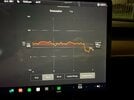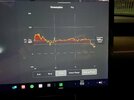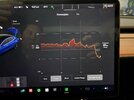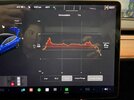CarlThompson
Member
If you check the model S subforums you will find that tesla does not give out new batteries for warranty, and the warranty specifically says that tesla can give new or remanufactured. the warranty also specifically spells out that the the replacement pack may not have the same capacity as new.
Reread what I wrote. I didn't say that Tesla would give anyone a new battery. And I clearly wrote that Tesla COULD give someone a battery that didn't have full capacity. But what I wrote (and I thought was very clear) is that for all the battery replacements I've read about so far Tesla has "supplied a replacement battery that worked similarly to new." If you have specific examples of cases where this was not true then of course that would be good to know. Do you?
So, what @PartyBoy asked about is absolutely not going to work, as tesla will have every statistic possible on exactly how the car, and the battery, was used.
I have no idea how you are arriving at that conclusion. Putting aside whether or not someone morally SHOULD attempt to use a product in a way that could cause premature wear in order to get a warranty replacement... as long as they don't do anything that Tesla says would void the warranty that should be no problem. For example, there have been multiple examples of cars receiving replacement batteries with no issues that were supercharged to 100% multiple times per day because they were used in a taxi service. (At the time using the car as part of a transportation business wasn't against Tesla's warranty.)
So if @PartyBoy or anyone else wants to supercharge to 100% multiple times per day and / or rapidly discharge their car to 1% on a race track multiple times per day that's perfectly OK according to Tesla and in my opinion Tesla should not do anything to punish them because it's perfectly within what's allowed by the warranty.
MUST... NOT... THUMBS... DOWN... MODERATOR... WITH... WHOM... I... USUALLY... AGREE!!!






